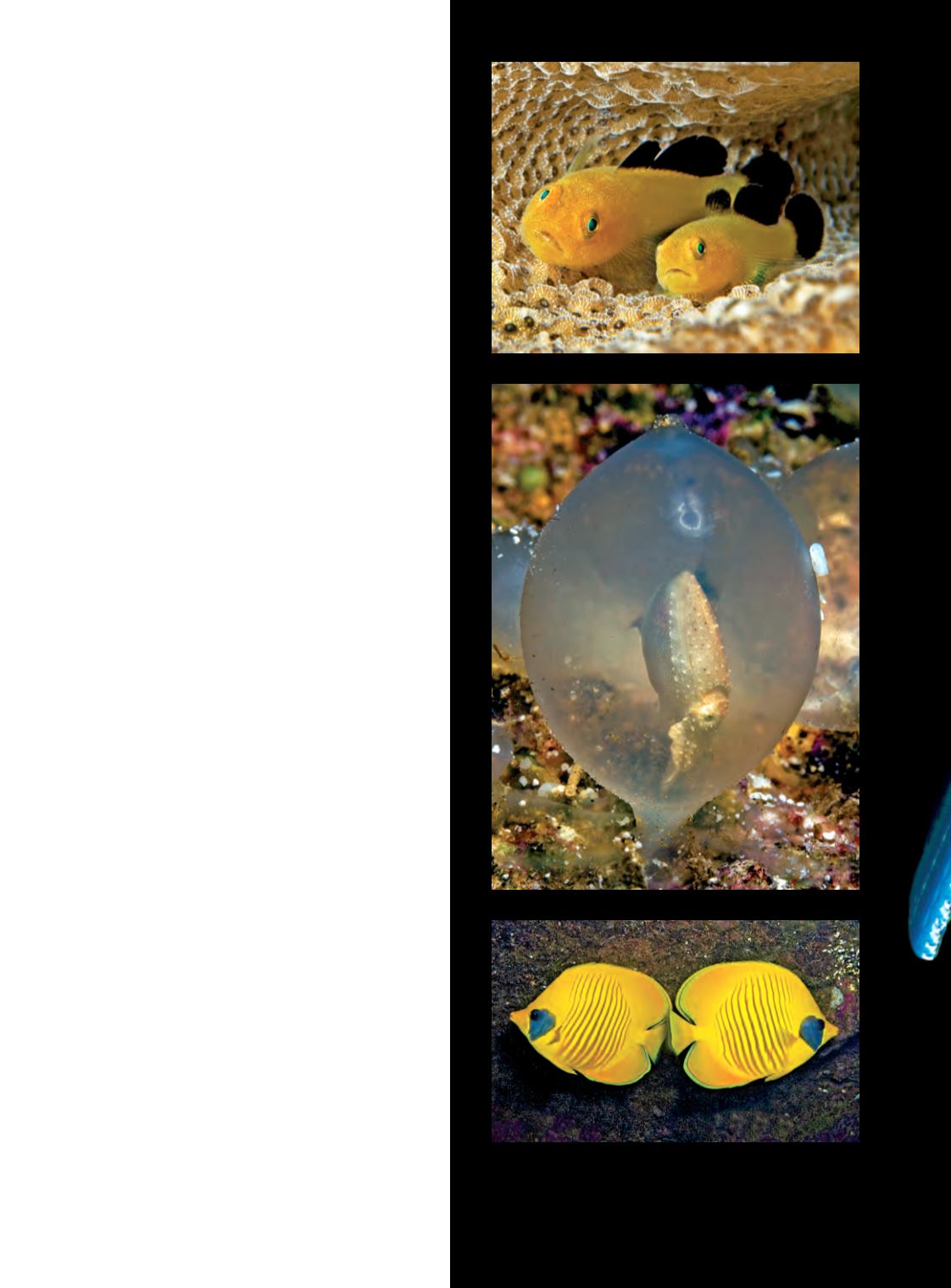
through the nuances in nature. They enjoy the hunt as
much as we do and love nothing more than a challenge.
Half the species pictured in our Pacific books wouldn’t
be there without their underwater wizardry.
A second tip: Be willing to give over your dive to a single
animal for a single photograph. One good image is worth
more than a thousand snapshots. Getting a good shot
requires time and a good dose of fortitude to remain in
place waiting for a single shot while so many other animals
and potential images swirl around. Capturing that one
good image requires knowledge of the subject and waiting
for the exact moment to trip the shutter. And don’t forget
the luck factor, a pivotal component of any success.
SF
//
Tell me a little about your involvement with
the Reef Environmental Education Foundation,
better known to most of us as REEF.
ND
//
Paul and I, along with our dear friend Jim Dalle
Pazze, founded REEF shortly after our first book hit
the market. The idea for the organization sprang from
the lack of information Paul and I were able to find
about fish populations while we did research for our
book. You have to think back to the 1980s and realize
that at that time many island nations were looking for
low-impact reef studies to replace traditional methods
that required dredging, poisoning and the always
sketchy practice of obtaining data from commercial
fisheries. We simply incorporated the methods
birdwatchers had been using for years to conduct
censuses of bird populations.
REEF began training divers to measure fish
biodiversity and gather relative-abundance data
during organized field trips and diving vacations.
Two decades and thousands of volunteer dives later
REEF has compiled the largest visual sighting database
of marine fishes in the world — a unique resource
that’s used by governmental agencies, researchers,
conservationists and fisheries managers to help
establish and evaluate management practices. This
summer we celebrated the 20
th
anniversary of our first
fish count, which took place in Key Largo.
Since its beginnings the organization has branched
out, taking the lead in studying the lionfish invasion of
the Western Atlantic and working with the Cayman
Islands Department of Environment to research one
of the last-known mass-spawning aggregations of
Nassau grouper. All of this has been accomplished by
divers who share a common desire to do something
right for the ocean. That does my heart good.
AD
IMAGING
//
S H O O T E R
98
|
WINTER 2014
From top: blackfin coralgobies (Paragobiodon lacunicolus);
a tiny cuttlefish seconds before popping out of its egg cas-
ing; masked butterflyfish (Chaetodon semilarvatus).
Opposite: In competition for a mate, male bigfin reef squid
(Sepioteuthis lessoniana) flare their arms and display the
traditional zebra pattern.


